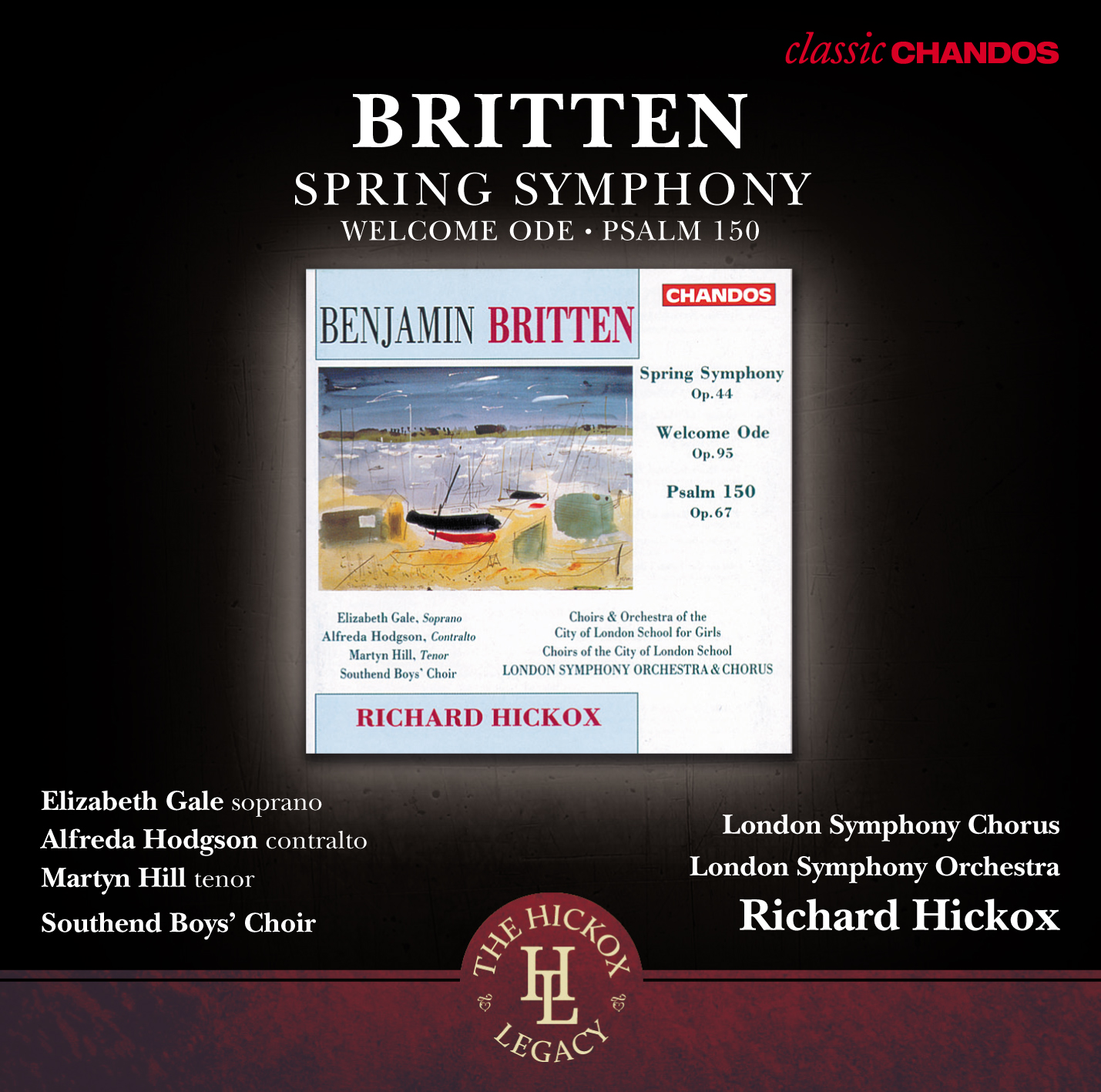By the sound of it, one of a warmer clime.
I love Benjamin Britten's Spring Symphony! I liken it to a British Carmina Burana, but as an Ode to Spring.
Despite the symphonic title, I have always considered this work fitting more as a cantata. Sure, it is divided into four parts, which could be considered movements; however, each movement is further divided into separate choruses and vocal solos. The most symphonic portion would probably be the extended orchestral-only prelude that begins the piece.
I remember upon first hearing Spring Symphony, the opening almost put me off of the work. Only later did I realize Britten was setting the doldrums of winter as a 10-minute, colorfully dissonant introduction to the following joyful promise of bounty that is Spring.
What follows the opening orchestral overture is a hoot! You can tell the tenor solo of The Merry Cuckoo was originally conceived for Peter Pears, and indeed the pair recorded this on Decca. The Sweet Spring and Driving Boy are filled with vitality and special color, aided by children's choir, while the Morning Star is a fine end to the whole first portion.
The second movement is more introspective regarding Spring, crowned by the contralto solo in Out on the Lawn I Lie in Bed. It just goes to show that Britten isn't going all out for frolicking around the May Pole. The third movement is rather brief, coming before the final choral paean with full orchestra.
While voice and chorus is at the front of this work, it is the orchestral colors which are most intriguing. When the vocal soloists are featured in particular, Britten chooses odd instrument combinations and a wide percussive landscape to dot his music. Spring Symphony is truly a great experience!
I assume because the City of London School choirs were involved in this production, Richard Hickox leads these school-aged performers in music composed by Britten for school-aged performers.
Welcome Ode uses the school singers across five types of dances, while Psalm 150 includes a school orchestra as well. I can't say these two pieces are essential listening, but it is interesting to hear a major composer writing for amateur forces. Britten, like Vaughan Williams and Holst, never composes to the lowest-common denominator when dealing with amateurs, and he greatly stretches these youngsters musically.
Most revere recordings of Spring Symphony from André Previn and Benjamin Britten himself. I think there is a good deal more electricity under Hickox than Previn, but I do like Previn's soloists a lot. Previn's extras come in the form of the Four Sea Interludes, which doesn't add up to much more than what is offered here on Chandos. With Britten himself on Decca, however, George Malcolm conducts the equally colorful Cantata Academica and Hymn to St. Cecilia, both choral treasures.
Works
Spring Symphony, op. 44 (44.33)
Welcome Ode, op. 95 (8.15)
Psalm 150, op. 67 (5.27)
Soloists
Elizabeth Gale, soprano
Alfreda Hodgson, contralto
Martyn Hill, tenor
Kurt-Hans Goedicke, timpani
Performers
Southend Boys' Choir
City of London School choirs
London Symphony Chorus
City of London School orchestra
London Symphony Orchestra
Richard Hickox, conductor
Label: Chandos
Year: 1990; 2013
Total Timing: 56.26
I am a Spring Symphony pusher. I tell anyone who loves choir or voice, or someone who will simply listen to me, to go out and give this work a try.
This could be a favorite recording of mine, too. Alfreda Hodgson gets a nod for her lovely solo in Out on the Lawn I Lie in Bed.
The paired music is not essential, but interesting for those who want to dive deep into the music of Britten. One could hardly complain about such a choice.




No comments:
Post a Comment